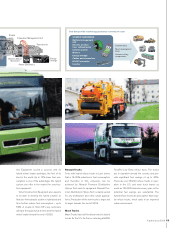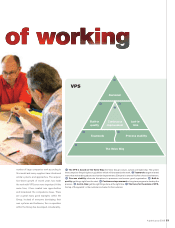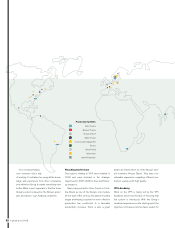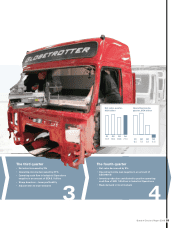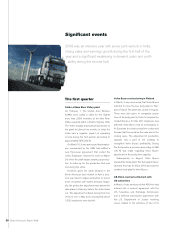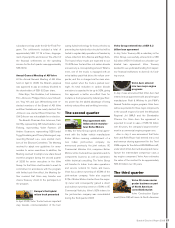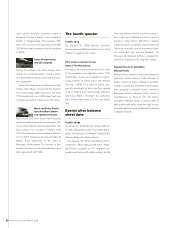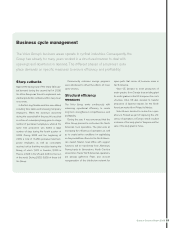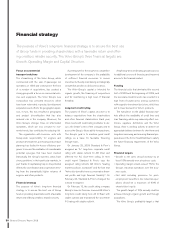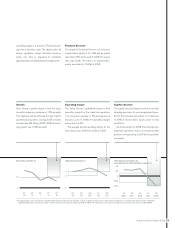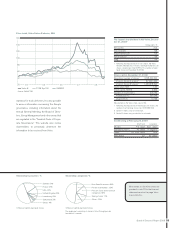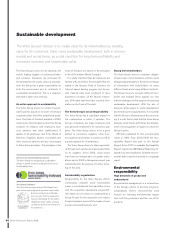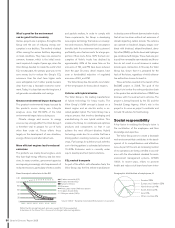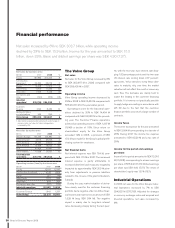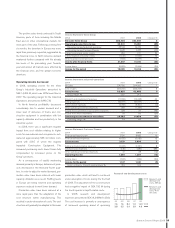Volvo 2008 Annual Report Download - page 33
Download and view the complete annual report
Please find page 33 of the 2008 Volvo annual report below. You can navigate through the pages in the report by either clicking on the pages listed below, or by using the keyword search tool below to find specific information within the annual report.
Sharp cutbacks
Against the background of the sharp fall in glo-
bal demand during the second half of 2008,
the Volvo Group was forced to implement sub-
stantial production cutbacks within many busi-
ness areas.
In the fi rst step, fl exible work time was utilized,
including time banks and releasing temporary
employees. When the downturn worsened
during the second half of the year, this resulted
in notices of redundancy being given to a large
number of permanent employees, while at the
same time production was halted a large
number of days during the fourth quarter of
2008. During 2008 and the beginning of
2009, a total of 16,255 permanent and tem-
porary employees as well as consultants
received notice that they would be leaving the
Group, of which 7,670 in Sweden, 2,223 in
France, 2,328 in the US and 4,034 in the rest
of the world. During 2008, 5,800 of these left
the Group.
Concurrently, extensive savings programs
were introduced to offset the effects of lower
sales volumes.
Structural effi ciency
measures
The Volvo Group works continuously with
enhancing operational effi ciency to create
long-term strengthened competitiveness and
profi tability.
During the year, it was announced that the
Volvo Group planned to restructure the North
American truck operations. The plan aims at
increasing the effi ciency of operations as well
as to create better conditions for capitalizing
on the possibilities offered in the North Ameri-
can market. Mack’s head offi ce with support
functions will be transferred from Allentown,
Pennsylvania to Greensboro, North Carolina
where Volvo Trucks’ North American operations
are already gathered. Plans also include
reorganization of the distribution network for
Business cycle management
The Volvo Group’s business areas operate in cyclical industries. Consequently, the
Group has already for many years worked in a structured manner to deal with
upswings and downturns in demand. The different phases of a business cycle
place demands on specifi c measures to ensure effi ciency and profi tability.
spare parts that serves all business areas in
North America.
Volvo CE decided to move production of
motor graders from Canada to an existing plant
for motor graders in the US to improve the costs
structure. Volvo CE also decided to transfer
production of backhoe loaders for the North
American market from Poland to Mexico.
Volvo Buses decided to restructure oper-
ations in Finland as part of improving the effi -
ciency of operations in Europe, which resulted
in closure of the body plant in Tampere and the
sale of the body plant in Turku.
29
Board of Directors’ Report 2008


